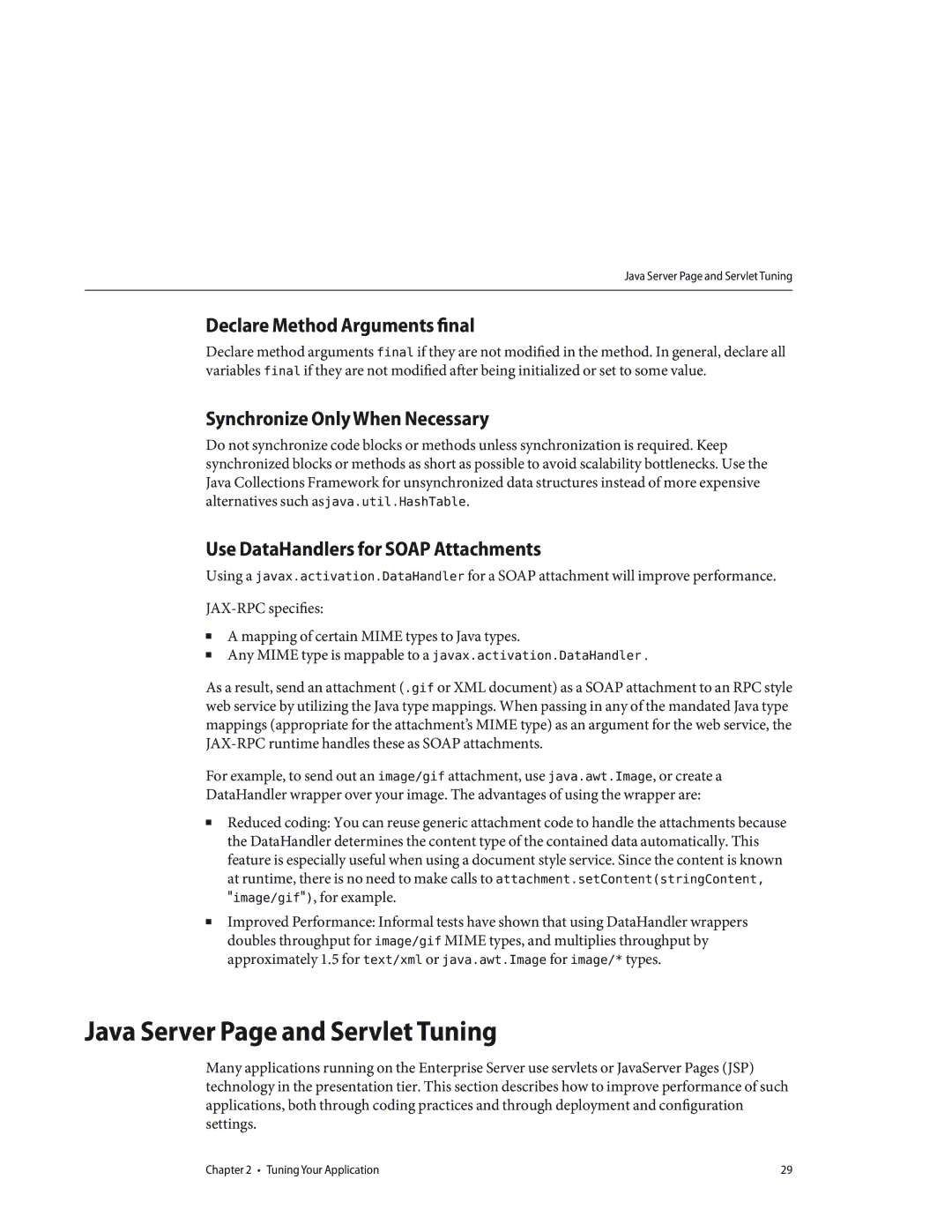Java Server Page and Servlet Tuning
Declare Method Arguments final
Declare method arguments final if they are not modified in the method. In general, declare all variables final if they are not modified after being initialized or set to some value.
Synchronize Only When Necessary
Do not synchronize code blocks or methods unless synchronization is required. Keep synchronized blocks or methods as short as possible to avoid scalability bottlenecks. Use the Java Collections Framework for unsynchronized data structures instead of more expensive alternatives such asjava.util.HashTable.
Use DataHandlers for SOAP Attachments
Using a javax.activation.DataHandler for a SOAP attachment will improve performance.
■A mapping of certain MIME types to Java types.
■Any MIME type is mappable to a javax.activation.DataHandler .
As a result, send an attachment (.gif or XML document) as a SOAP attachment to an RPC style web service by utilizing the Java type mappings. When passing in any of the mandated Java type mappings (appropriate for the attachment’s MIME type) as an argument for the web service, the
For example, to send out an image/gif attachment, use java.awt.Image, or create a
DataHandler wrapper over your image. The advantages of using the wrapper are:
■Reduced coding: You can reuse generic attachment code to handle the attachments because the DataHandler determines the content type of the contained data automatically. This feature is especially useful when using a document style service. Since the content is known at runtime, there is no need to make calls to attachment.setContent(stringContent, "image/gif"), for example.
■Improved Performance: Informal tests have shown that using DataHandler wrappers doubles throughput for image/gif MIME types, and multiplies throughput by approximately 1.5 for text/xml or java.awt.Image for image/* types.
Java Server Page and Servlet Tuning
Many applications running on the Enterprise Server use servlets or JavaServer Pages (JSP) technology in the presentation tier. This section describes how to improve performance of such applications, both through coding practices and through deployment and configuration settings.
Chapter 2 • Tuning Your Application | 29 |
